
Hey there, digital enthusiasts and ambitious local business owners! Ever wondered why your business isn’t dominating your local market online, even when you’re doing “everything right”? Well, let’s talk about how to fix that. The key isn’t just in best practices; it’s in using the best local SEO tools to unlock opportunities you didn’t even know existed. Trust me, I’ve been there, scrutinizing over every local SEO strategy, tips, and techniques, only to realize that the game-changing solutions were right under my nose. That’s why I’ve put together this definitive local SEO guide that will not only give you a solid local SEO checklist to follow but also introduce you to 7 must-have SEO tools you absolutely need for dominant local business visibility. This isn’t just another list; it’s a roadmap filled with local SEO tips, proven local SEO best practices, and even real-world local SEO case studies to showcase how these tools have transformed local businesses. Ready to amplify your local reach? Let’s dive in and make your business unmissable in local searches!
The Growing Importance of Local SEO
In the vast expanse of the digital realm, businesses are constantly seeking strategies to stand out. While global reach and visibility are often considered the ultimate goals, there’s an element that often gets overshadowed, yet holds immense potential: Local SEO.
Bridging the Gap Between Online and Offline
More than ever, consumers are turning to online searches to guide their offline decisions. Be it the café around the corner, a nearby plumber, or the best local gym, online searches significantly influence these local choices. According to a Think with Google report, “Near me” searches have seen exponential growth, showcasing the reliance on digital means to find local solutions. Local SEO is no longer a luxury—it’s a necessity.
Trust and Authenticity
Local businesses thrive on community trust. When a customer can find a local business online, read reviews, explore services, and understand its location, it adds layers of trust and reliability. In essence, Local SEO builds a bridge of authenticity between businesses and their communities.
Mobile Search: The Game Changer
The meteoric rise in mobile device usage has made Local SEO indispensable. With smartphones becoming an extension of one’s self, it’s no surprise that consumers frequently use them for on-the-go searches. Local SEO ensures that when someone in your vicinity searches for services you offer, your business appears at the forefront.
Enhancing Conversion Rates
Local SEO isn’t just about visibility; it’s about conversion. A well-optimized local listing means you’re reaching the right audience at the right time, leading to higher conversion rates. Whether it’s a call to your business, a visit to your store, or an online reservation, local SEO optimizes this journey for potential customers.
Competitive Edge in a Saturated Market
In today’s hyper-competitive business environment, standing out is imperative. By harnessing the power of Local SEO, businesses can differentiate themselves, especially in saturated markets. It’s an opportunity to shine in a specific locale, even if the global stage is crowded.
The Tangible and the Intangible
Beyond the tangible benefits like increased traffic and sales, Local SEO also brings intangible advantages. Enhanced brand recognition, community goodwill, and establishing a business as a local authority are just a few.
In conclusion, Local SEO isn’t just another trend; it’s a pivotal element of modern-day digital marketing. In a world where personalization is key, and consumers crave tailored experiences, Local SEO ensures that businesses can offer just that – a localized, personalized, and efficient service that resonates with the community they serve.
Understanding the Landscape: Local vs. Global SEO
If you’re an entrepreneur or marketer in today’s digital age, you’ve likely heard the terms “Local SEO” and “Global SEO” thrown around more times than you can count. But what’s the distinction between these two? More importantly, why should you care? Understanding the nuances between Local and Global SEO is crucial for tailoring your marketing strategy, especially when your goal is to dominate both local and international markets.
The Fundamental Differences
At its core, Global SEO focuses on improving your website’s visibility and search rankings on a broad, international scale. It’s about optimizing for keywords that are universally competitive, with the goal to attract a worldwide audience.
On the other hand, Local SEO aims at ensuring your business shows up in search queries specific to the geographic locale you operate in. The target is the community around your business, and the keywords often have geographical appendages like “near me,” “in [City],” or “[Service] in [City].”
Geographic Targeting: Narrowing the Focus
One of the most significant differences is the geographical factor. Global SEO largely ignores the geographic location of the searcher, focusing instead on providing the most relevant information based on the search query. Local SEO, however, is intrinsically tied to the geographic location. It ensures that local businesses show up in local search results, thus narrowing the focus but increasing relevance exponentially.
The Role of Cultural Nuances
When you’re operating on a global scale, cultural nuances, language differences, and regional preferences play a huge role. Global SEO requires a deep understanding of these elements, often demanding website localization or even multiple versions of the site to cater to different demographics. Local SEO doesn’t require this level of complexity; the cultural context is already established, allowing businesses to focus solely on serving their local community effectively.
On-Page and Off-Page Elements
Both Local and Global SEO employ on-page and off-page optimization strategies, but the tactics differ. Local SEO places more emphasis on local backlinks, local listings, and local keywords. Global SEO focuses on creating high-quality content that appeals to a broad audience, securing backlinks from authoritative international sites, and establishing global credibility.
The Immediacy of Conversions
Local SEO often leads to immediate actions. A search for “coffee shops near me” is likely followed by a visit to the establishment, while global searches may be more informational and less immediate in terms of conversion. Therefore, Local SEO metrics often include real-world visits, calls, and direct interactions, whereas Global SEO focuses more on website metrics like page views, session duration, and bounce rates.
The Bottom Line: Why Tailoring Matters
Understanding these differences helps businesses tailor their SEO strategies effectively. While Global SEO is about reach and scale, Local SEO is about relevance and immediacy. In crowded markets, a well-executed Local SEO strategy can provide a competitive edge, making your business more accessible and appealing to those in your immediate vicinity.
In summary, both Local and Global SEO have their unique benefits and challenges. Choosing the right approach—or a hybrid of the two—depends on your business goals, target audience, and the scale at which you operate.
Tool 1: Google My Business - Optimizing Your Local Listings
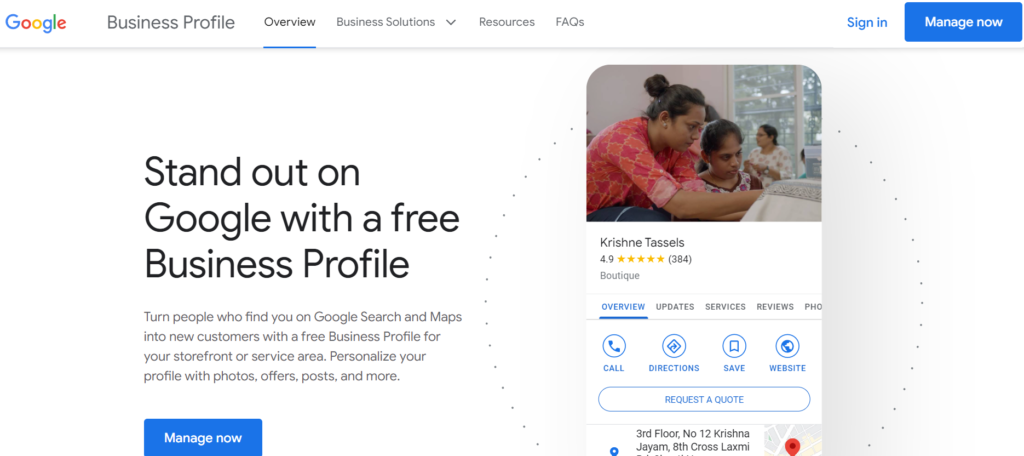
In the realm of local SEO, few tools hold the clout and significance that Google My Business (GMB) does. Acting as the primary portal for businesses to manage their presence on Google Search and Maps, GMB has become the cornerstone for local businesses looking to establish a robust digital footprint.
Why Google My Business?
Universal Reach: Google dominates the search engine market, handling over 90% of global search queries. Having a well-optimized presence on GMB ensures your business is visible where most consumers are searching.
Integrated Feedback System: With GMB, customers can leave reviews, ask questions, and interact directly with businesses. This system not only fosters transparency but also boosts trust and credibility in the eyes of potential customers.
Rich Features for Engagement: Beyond basic listing information like address, phone number, and hours of operation, GMB allows businesses to post updates, offers, events, and photos. This keeps the listing fresh, engaging, and relevant to what’s currently happening in the business.
Optimizing Your Google My Business Listing
1. Complete Every Section: Ensure every section of your GMB listing is filled out, including business categories, attributes, and more. The more complete your profile, the more beneficial it is for SEO and user experience.
2. Use High-Quality Images: Visual appeal matters. Upload high-resolution images of your business, including interiors, exteriors, products, and any other relevant photos. A virtual tour can also provide potential customers with an immersive experience.
3. Gather and Respond to Reviews: Encourage satisfied customers to leave positive reviews. More importantly, be sure to respond to these reviews, whether they’re positive or negative. This shows you value feedback and are active in managing your business’s reputation.
4. Utilize the Posts Feature: Regularly update your GMB listing with posts about promotions, events, or news related to your business. It keeps your listing active and provides valuable information to potential customers.
5. Check for Accuracy: Ensure that your business’s Name, Address, and Phone number (NAP) are consistent across all online platforms. Inconsistencies can confuse search algorithms and reduce your chances of ranking high in local searches.
6. Use Insights: Google My Business provides insights into how customers find your listing and what actions they take. Use this data to refine your listing and make it more effective.
Tool 2: Yext - Harnessing the Power of Local Reviews
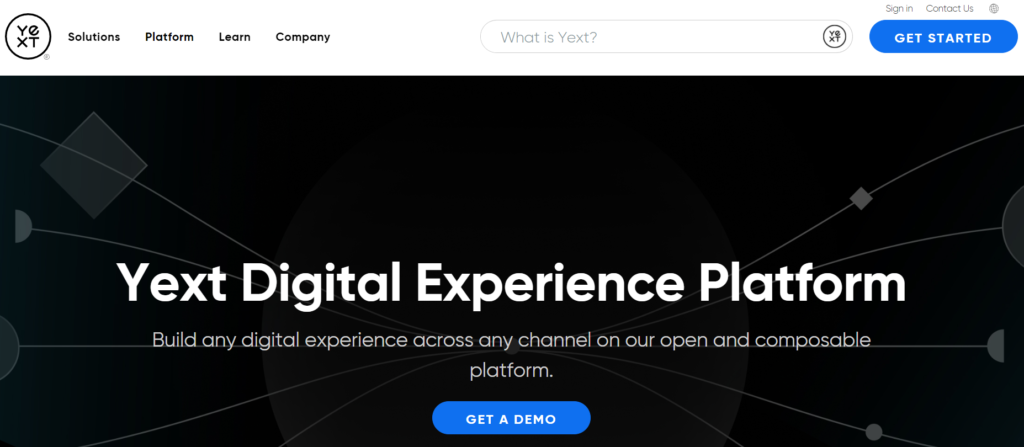
In the digital age, where consumers are empowered with information at their fingertips, online reviews have emerged as a crucial determinant of a business’s reputation and trustworthiness. Enter Yext, a digital knowledge management platform that ensures businesses have consistent and accurate listings across the internet. But beyond just listings, Yext offers tools that help businesses manage and harness the power of local reviews.
Why Yext for Local Reviews?
Centralized Review Management: Yext consolidates reviews from various platforms, giving businesses a centralized dashboard to monitor feedback, respond to reviews, and gain insights from customer sentiments.
Enhanced Visibility: Consistent information across different directories and platforms increases the chances of a business appearing in local searches. By ensuring accuracy, Yext boosts visibility and drives organic traffic.
Streamlined Response Process: With the ability to respond to reviews directly from the Yext dashboard, businesses can address customer feedback promptly, enhancing brand reputation and customer trust.
Optimizing Your Presence with Yext
1. Audit and Clean Up: Start by using Yext’s scan feature to check how your business appears across various online directories. Rectify any inaccuracies and ensure a consistent representation everywhere.
2. Promptly Address Reviews: Regularly check and respond to feedback. Thank Yext users for positive reviews and address any negative comments with professionalism and empathy.
3. Utilize Analytics: Yext provides detailed analytics about how often your listings are viewed, clicked on, and more. Use this data to refine your local SEO strategy and make necessary adjustments.
4. Encourage Reviews: Engage with satisfied customers and gently encourage them to leave reviews. More reviews not only boost credibility but also enhance local search ranking.
5. Stay Updated: Digital platforms and directories frequently update their algorithms and features. Yext helps ensure you’re always in sync, adapting to changes and optimizing your listings.
Empowerment Through Yext
Using Yext goes beyond just consolidating reviews. It’s about establishing a consistent and trusted online presence. In a marketplace where customers often decide based on reviews and online reputation, Yext acts as an ally, ensuring businesses are well-equipped to showcase their best side, engage with their community, and turn feedback into actionable insights for growth.
Tool 3: Moz Local - Local Keyword Analysis Made Easy
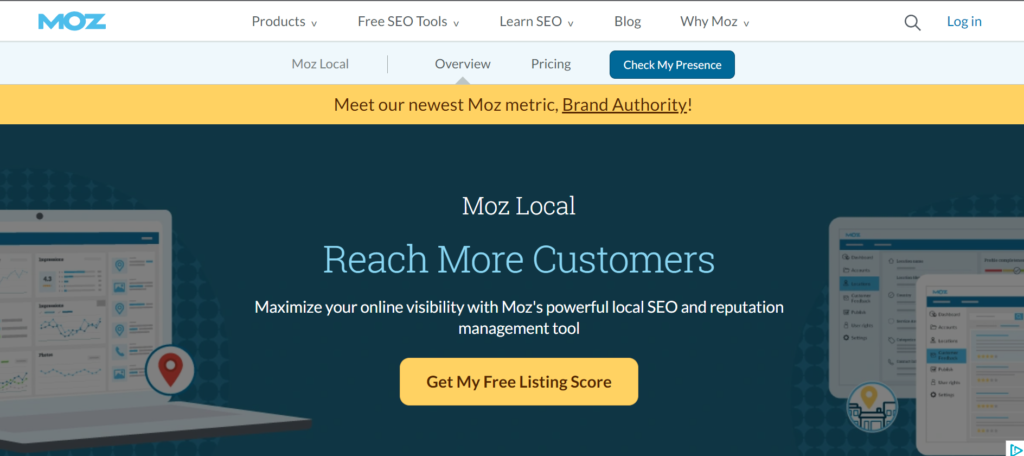
In the vast sea of SEO tools available to businesses, few shine as brightly for local SEO efforts as Moz Local. Designed to simplify the complexities of local search, Moz Local offers an intuitive suite of tools that zeroes in on keyword analysis tailored for local businesses. Let’s dive into the unique offerings of this indispensable tool.
Moz Local: An Overview
Hyper-local Keyword Insights: Moz Local understands the nuances of local search behavior. It recommends keywords that are genuinely relevant to specific geographical areas, ensuring businesses tap into locally trending searches.
Visibility Metrics: How does your business fare in local search results? Moz Local offers insights on your search visibility, helping businesses understand where they stand in the local digital ecosystem.
Competitor Keyword Analysis: Knowledge is power. Knowing which keywords your competitors are ranking for locally can give you an edge. Moz Local pulls back the curtain, revealing potential keyword opportunities you might be missing.
Utilizing Moz Local for Optimal Keyword Strategy
1. Comprehensive Keyword Research: Start with Moz Local’s robust Keyword Explorer. It provides granular data on local keywords, including search volume, difficulty, and organic click-through rate predictions.
2. Track Keyword Performance: Establishing a local keyword strategy is just the beginning. Use Moz Local’s performance tracking tools to monitor keyword rankings and adjust your strategy based on real-time results.
3. Spot Check with SERP Analysis: Dive into the Search Engine Results Pages (SERP) for specific keywords. Analyze features like local packs, organic results, and more to refine your approach.
4. Integration is Key: Moz Local isn’t just a standalone tool. Combine it with the broader Moz suite for a 360-degree SEO strategy, enriching your local keyword insights with broader SEO tactics.
5. Monitor User Feedback: Local reviews and Q&As can offer unexpected keyword opportunities. Moz Local helps you stay on top of user-generated content, tapping into authentic local voices for keyword inspiration.
Unlocking Local Potential with Moz Local
In the realm of local SEO, specificity is king. Broad, generic keywords often don’t resonate with local audiences the way hyper-localized terms do. With Moz Local, businesses can fine-tune their keyword strategies to reflect the authentic search behaviors of their target community. By honing in on what locals are genuinely searching for, businesses can ensure their content, products, and services are perfectly aligned with local demand.
Tool 4: Whitespark - Keeping an Eye on the Competition
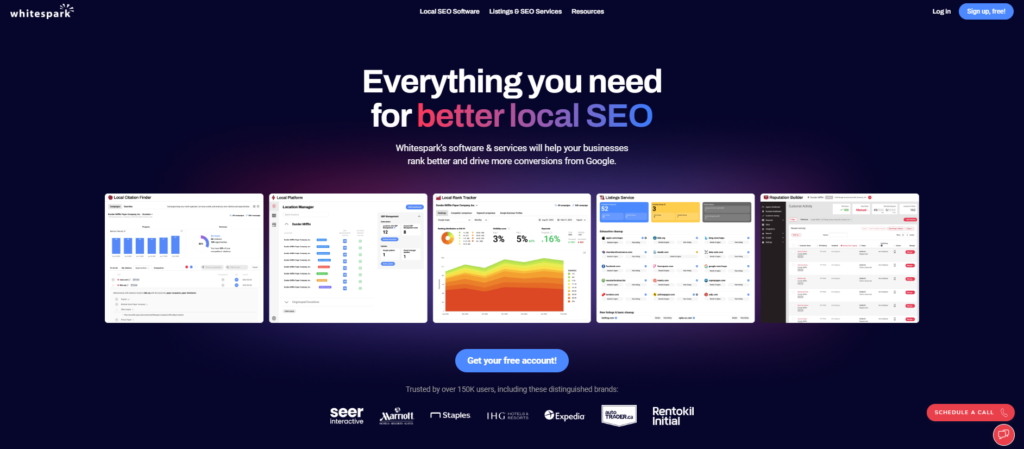
In the fast-paced digital arena, staying ahead means keeping a close watch on your competitors. Whitespark, known for its specialized local SEO tools, offers a suite of features that provide businesses with unparalleled insights into what their competitors are doing right (and wrong) in the local search space.
Whitespark’s Competitive Edge
Local Citation Finder: One of Whitespark’s standout tools, the Local Citation Finder helps businesses identify where their competitors are listed online. This not only pinpoints potential platforms for you to target but also highlights the importance of consistent NAP (Name, Address, Phone Number) across directories.
Link Intersect Tool: Whitespark allows you to find out which websites are linking to your competitors but not to you. These insights can be invaluable in building a more robust backlink profile to rival and surpass competitors.
Rank Tracker: By understanding where your competitors rank for specific keywords, you can adjust your own strategy to target gaps or challenge dominant positions. Whitespark’s Rank Tracker offers granular insights into local keyword rankings.
Maximizing Whitespark for Competitive Analysis
1. Comprehensive Citation Audit: Before targeting new citation opportunities, audit your current ones. Identify discrepancies and fix inconsistencies to boost your local search ranking.
2. Monitor Regularly: The digital landscape is dynamic. Regularly use Whitespark to check on competitor activities, ensuring you never miss a new strategy or trend they’re leveraging.
3. Engage in Gap Analysis: Using Whitespark’s tools, identify gaps in your local SEO strategy as compared to your competitors. Perhaps they’re targeting a niche directory or capitalizing on a locally trending keyword you’ve missed.
4. Combine Tools for Holistic Insights: Don’t just rely on one feature. Use Whitespark’s suite of tools in tandem to gather comprehensive insights, from backlinks to reviews to rankings.
5. Act on Insights: Data is powerful, but only if acted upon. Use the insights from Whitespark not just for analysis but to refine and revamp your local SEO strategy proactively.
Staying Ahead with Whitespark
With the local digital space becoming increasingly competitive, businesses can’t afford to be complacent. Whitespark offers the tools needed to keep a vigilant eye on the competition, ensuring you’re always one step ahead. By understanding and anticipating competitor moves, you’re better positioned to carve out a dominant local presence that drives traffic, engagement, and conversions.
Tool 5: BrightLocal - Ensuring Consistent NAP (Name, Address, Phone) Data
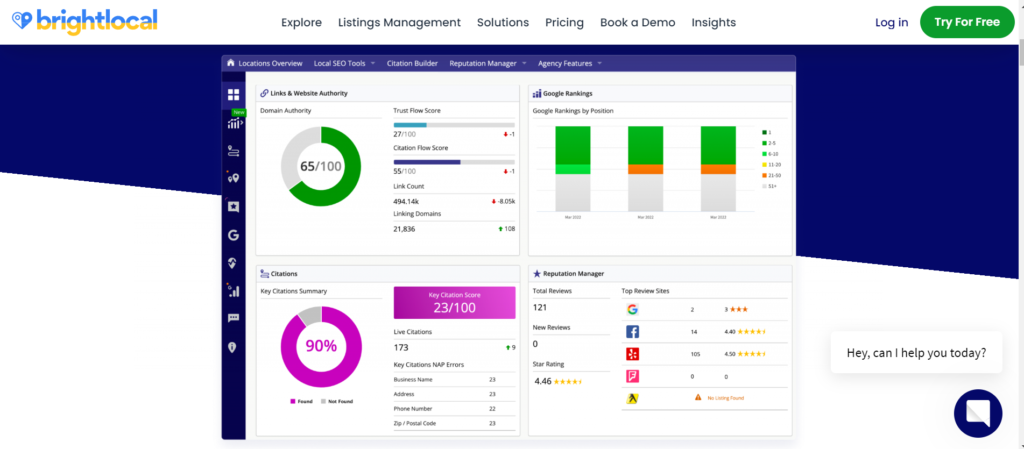
In the world of local SEO, maintaining consistent NAP data across various online directories and platforms is crucial. Inaccuracies or discrepancies can not only confuse potential customers but also hamper search engine rankings. Enter BrightLocal, a tool designed to ensure your business details remain uniform, accurate, and up-to-date across the web.
Why BrightLocal Shines for NAP Consistency
NAP Audit & Clean-Up: BrightLocal can conduct a thorough audit of all online citations, pinpointing inaccuracies, duplicates, or missing listings. Its clean-up feature then aids in rectifying these discrepancies.
Local Search Grid: This unique feature provides a visual representation of how your business appears in local searches across different parts of your city, giving you a true sense of your local online visibility.
Instant Data Push: To major online directories, ensuring that your business data is uniformly distributed and instantly updated when changes are made.
Optimizing Your NAP Data with BrightLocal
1. Initiate Regular Audits: Regularly schedule NAP audits to ensure all listings remain accurate and reflect any changes to your business information promptly.
2. Monitor Reviews: Beyond NAP data, BrightLocal also tracks reviews across different platforms. Consistent responses to these reviews can further solidify your brand’s local reputation.
3. Analyze & Refine: Use BrightLocal’s suite of analytics tools to understand your performance in local searches. This can provide insights into areas where your NAP data might need further refinement.
4. Stay Updated: As online directories evolve and new ones emerge, ensure your business is listed and updated across these platforms. BrightLocal can notify you of such opportunities.
5. Centralize Data Management: Instead of manually updating each directory, use BrightLocal as a centralized platform to manage and distribute your NAP data consistently.
BrightLocal: Your Beacon for Local Visibility
Ensuring that potential customers find accurate and consistent details about your business is fundamental for trust, engagement, and conversions. With BrightLocal, businesses have an efficient tool at their disposal to oversee their NAP data, ensuring it remains a reliable anchor in the ever-changing tides of the online world. By leveraging BrightLocal’s capabilities, businesses can solidify their local footprint, foster trust, and ensure they are easily found and contacted by their target audience.
Tool 6: Mention - Engaging Local Audiences through Social Signals
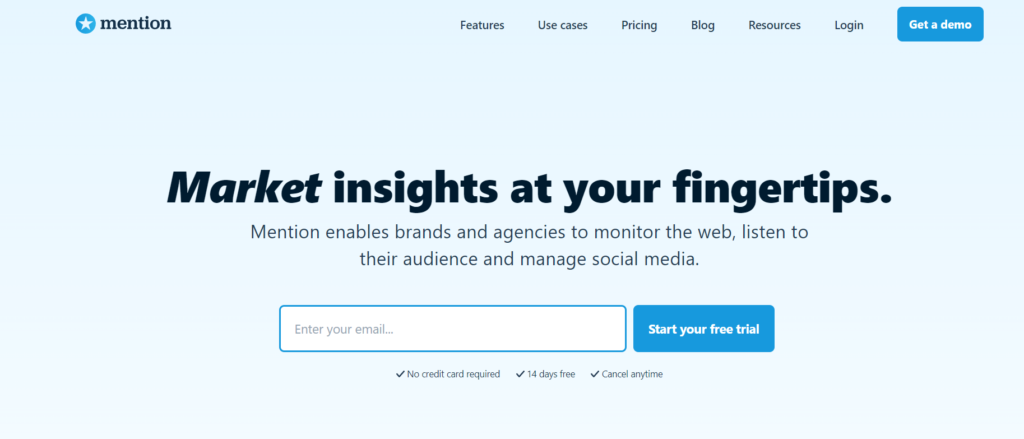
In today’s digitally connected landscape, understanding and responding to social signals is paramount for any business aiming to create genuine engagement. Mention is a premier tool that empowers businesses, especially at the local level, to keep their finger on the pulse of their online reputation and audience sentiment.
Mention’s Role in Harnessing Social Signals
Real-time Social Monitoring: Mention continually scans various social platforms to capture real-time mentions of your brand, product, or any keyword. This immediacy allows businesses to respond timely, ensuring they’re always part of the conversation.
Location-based Tracking: For local businesses, geo-targeted tracking is invaluable. Mention enables brands to zero in on discussions and mentions originating from specific locales, providing a genuine feel of local sentiment.
Influencer Collaboration: Understanding who holds sway in your local digital space can supercharge your engagement. Mention helps identify local influencers, providing opportunities for collaboration and outreach.
Driving Local Engagement with Mention
1. Proactive Response to Feedback: Negative or positive, every mention is an opportunity. Use Mention to promptly respond to feedback, address concerns, and amplify positive testimonials.
2. Uncover Local Trends: Understand what’s resonating with your local audience. Be it an event, local news, or a trending topic, Mention can keep you informed and ready to engage.
3. Leverage Analytics: Mention isn’t just about tracking mentions; it offers comprehensive analytics to assess engagement, reach, and the overall effectiveness of your social efforts.
4. Organize Campaigns: Use Mention to organize and manage local campaigns, tracking their performance in real-time to optimize for best results.
5. Engage with Local Champions: Through Mention, identify and engage with local brand advocates and influencers. Their endorsement can significantly amplify your local reach.
Mention: Staying Connected in the Local Digital Ecosystem
In a world where conversations shift rapidly, and sentiment can make or break brands, Mention ensures that local businesses remain plugged in, proactive, and engaged. By listening and reacting to local social signals, businesses can foster stronger ties with their community, drive positive engagement, and effectively navigate the vast digital conversation surrounding their brand.
Tool 7: Matomo (formerly Piwik) - Visualizing Your Local Presence with Analytics
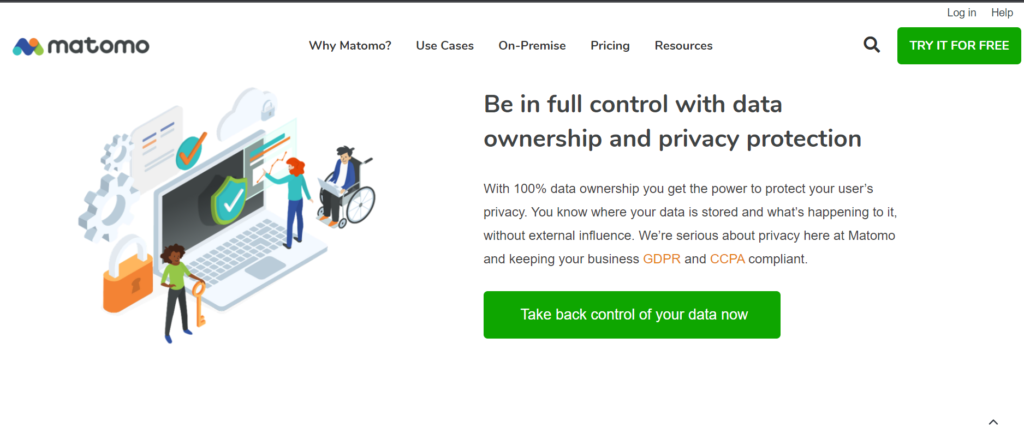
In the realm of local business, understanding your digital footprint is critical. Data-driven insights can guide strategy, refine outreach, and elevate engagement. Matomo, previously known as Piwik, stands as a robust analytics platform that brings clarity to the digital behaviors of your local audience, ensuring you’re not just present but also effectively resonating in your local digital sphere.
Diving Deep with Matomo’s Features
Geo-location Analytics: At the heart of any local business strategy is the understanding of where your audience is. Matomo provides in-depth geo-location analytics, enabling businesses to understand visitor demographics and behaviors based on their geographical locations.
Real-time Data Visualization: With Matomo, businesses can watch their local audience in real-time, understanding their online journey, and pinpointing areas of interest or drop-offs.
Privacy-Focused: Unlike many analytics platforms, Matomo prioritizes user privacy, ensuring data collection aligns with global privacy standards, making it a trustworthy choice.
Maximizing Local Insights with Matomo
1. Local Traffic Analysis: Break down website traffic by city or region to understand which localities are most engaged and tailor strategies accordingly.
2. Behavior Mapping: Understand how local users interact with your site. Which pages resonate? Where do they spend the most time? Matomo provides these insights.
3. Conversion Tracking: For local businesses with online transaction capabilities, tracking conversions by locality can be invaluable. Understand which regions drive the most business and why.
4. Referral Insights: Discover which local platforms or websites are driving traffic to your site. Is there a local forum or community platform that consistently mentions your business?
5. Customizable Dashboards: With Matomo, create dashboards that specifically highlight local metrics, ensuring you always have a snapshot of your local digital performance.
Matomo: Your Window to Local Digital Dynamics
A local business’s online presence isn’t just about being visible; it’s about understanding, adapting, and evolving based on local digital behaviors. Matomo provides the analytics and insights needed for businesses to not just observe but also interpret and act on the digital patterns of their local audience. With its focus on privacy and comprehensive analytics, Matomo ensures that businesses have a clear and ethical view of their local digital landscape.
Local SEO Best Practices: Beyond the Tools
While tools can undoubtedly streamline and enhance your local SEO efforts, it’s the foundational strategies and best practices that truly elevate a local business’s online visibility. Below are some crucial best practices every local business should embed in its SEO strategy:
1. Prioritize Google My Business
Optimize Your Profile: Ensure that your Google My Business (GMB) profile is not only claimed but also fully optimized with accurate information, high-quality images, and regular updates. Encourage reviews and consistently respond to them, demonstrating active engagement.
2. Create Local Content
Engage with Local Events and News: Crafting blog posts or articles around local events, news, or community stories showcases your business’s involvement in the locality. It resonates with local users and can improve regional search visibility.
3. Consistent NAP (Name, Address, Phone) Details
Maintain Uniformity: Across all platforms, directories, and websites, ensure that your business’s name, address, and phone number remain consistent. Inconsistencies can confuse search engines and potential customers.
4. Leverage Local Backlinks
Engage with Community Platforms: Local websites, forums, or community portals can be gold mines for relevant and authoritative backlinks. Collaborate with local influencers, participate in community events, or sponsor local activities to earn these backlinks.
5. Mobile Optimization is Key
Local Search is Mobile: With many local searches conducted on-the-go, ensure that your website is mobile-friendly. A responsive design that loads quickly on mobile devices is no longer optional—it’s a necessity.
6. Use Schema Markup
Highlight Local Signals: By implementing schema markup on your website, you can provide search engines with specific data about your business, including its geographical location, operating hours, and more. This can enhance your visibility in local search results.
7. Encourage and Manage Reviews
Boost Trust and Visibility: Encourage satisfied customers to leave positive reviews on platforms like Google, Yelp, or TripAdvisor. Address negative feedback promptly and professionally. Remember, reviews aren’t just for potential customers; they’re a signal to search engines about your business’s reputation.
8. Stay Updated with Local Trends
Regularly Refine Your Strategy: Local dynamics and preferences can change. Regularly assess and refine your local SEO strategy based on new trends, competitor activities, and changing audience behaviors.
The Future of Local SEO: Trends to Watch
The digital landscape is continually evolving, and with it, local SEO practices are undergoing transformative shifts. Local businesses aiming to stay ahead need to anticipate these changes and adapt their strategies accordingly. Let’s explore some of the most prominent trends that will influence the future of local SEO.
1. The Rise of Voice Search
Smart Speakers and Assistants: As devices like Amazon Echo, Google Home, and Apple’s HomePod become household staples, voice search queries will skyrocket. This trend emphasizes the need for businesses to optimize for conversational keywords and queries, given their natural language patterns.
2. Hyper-Local Targeting
The Micro-Moments: With advancements in geo-targeting technologies, businesses will be able to target potential customers not just based on cities or neighborhoods, but down to specific blocks or buildings. Capturing micro-moments, when a user is most likely to make a decision, will be crucial.
3. Augmented Reality (AR) Integration
Virtual Storefronts: AR technology can superimpose digital information onto the real world. This can allow users to virtually “walk” into a store, view products, or access reviews just by pointing their phones at a physical location, merging the digital and physical realms.
4. The Evolution of Google My Business (GMB)
Enhanced Features: Expect GMB to continually evolve, introducing new features that allow businesses to interact more dynamically with users. Regularly updating and optimizing GMB profiles will remain critical.
5. AI-Powered Personalization
Bespoke User Experiences: Artificial intelligence will drive deeper personalization in search results, tailoring them to user behaviors, preferences, and histories. Local businesses must harness this power to create more tailored experiences.
6. Enhanced Visual Search
Snap and Find: Platforms like Pinterest and Google Lens are pushing the boundaries of visual search. In the future, users could take a picture of a product or place and instantly receive local purchasing options or information.
7. Local Content Will Rule
Hyper-Local Journalism: As general trust in larger media dwindles, there’s a rising trend of hyper-local content consumption. Businesses collaborating with local bloggers, news outlets, or creating their own community-driven content can greatly benefit.
8. Sustainable and Ethical Business Practices
SEO with a Conscience: Modern consumers are increasingly considering the ethical and environmental stances of businesses. Highlighting sustainable practices, ethical sourcing, and community involvement can boost local SEO efforts.
9. The Integration of Online and Offline Data
Unified Business Intelligence: Combining insights from physical stores (like foot traffic, popular in-store products) with online data (website visits, online sales) will provide a more holistic view of consumer behavior, driving smarter local SEO strategies.
Conclusion: The Adaptive Landscape of Local SEO
As the lines between the digital and physical world blur, local SEO will transcend traditional boundaries. Staying informed about these trends and demonstrating adaptability will be key for businesses aiming for sustained local dominance. The future promises an integrated, immersive, and intuitive local search experience, and businesses that embrace these changes will undoubtedly thrive.
